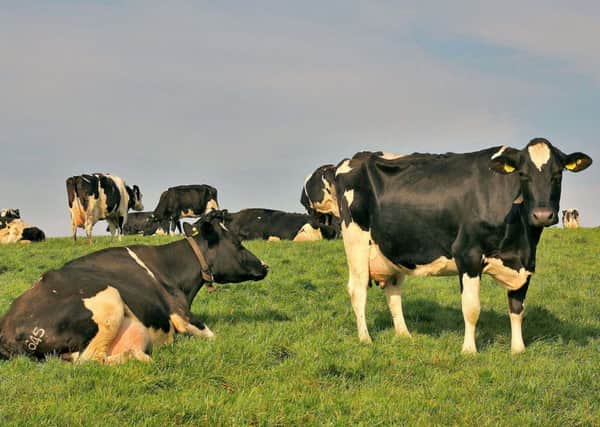DAERA Notes: Dairying


At turnout don’t be afraid to graze cows on a grass cover of 2,500 kg dry matter per hectare (the ankle of your boot). Graze grass down to 1,500 kg dry matter per hectare (the heel of your boot). Start grazing for three hours and build this up to half days over a period of a week to ten days. Cows should go out with an edge to their appetite, with a target of 5 kg grass dry matter intake. A grazing group of 60 cows will require 300 kg of grass dry matter.
Aim for an initial grazing rotation of between 25 and 30 days to allow the first grazing cycle to be completed before grass covers get too heavy. A surge in growth could mean that by the time you reach the end of the first grazing cycle covers are too heavy for cows to graze out cleanly. This makes it more difficult to maintain grass quality throughout the grazing season.
Advertisement
Advertisement
Improving milk from forage is still key to reducing production costs. Getting cows grazing is the simplest way to improve milk from forage. In most cases March grass has a higher energy value than the silage cows have been fed. Full March grazing has the potential to produce 20 litres of milk. Practically this requires you to increase the M+ in the parlour computer feed settings by 3.0 to 4.0 kg of milk at turnout. The few hours grazing after morning milking will save about 1.5 kg of concentrates per cow daily, replacing over half a tonne of concentrate per week for 50 cows. Continue to adjust the M+ in the parlour computer feed settings as cows move to full time grazing. In addition to the immediate savings in concentrate costs there should also be improvements in milk protein and yield.
The message is clear. Get some cows out grazing as soon as conditions allow. Adjust the M+ in the parlour computer feed settings at turnout and as cows move to full time grazing. Have your grazing rotation fully established by the third week in April.
Improving your farm lanes can pay dividends
Lameness in dairy stock can be caused by poorly maintained lanes. Repair laneway surfaces before cows go out. Focus on repairing broken or rough surfaces and maintaining effective drainage. Good surfaces that drain water freely do not damage cows feet.
The speed at which cows move is also important. If cows are allowed to walk at their own speed they will pick their way along poorer tracks. Wider lanes also increase the ability of cows to negotiate sharp stones, holes or other obstacles.
March jobs checklist
Advertisement
Advertisement
Spread slurry on silage ground by early March. Do not spread slurry on water logged ground, when raining heavily or when heavy rain is forecast within the next 48 hours or on ground that has a slope of 20% or more, is frozen or covered in snow.
Think about fertiliser needs based on soil analysis results, crop requirement and slurry/manure applications.
Complete any maintenance on cow tracks and paddock fencing in preparation for the grazing season.
Change time clocks at the end of the month when the hour changes.